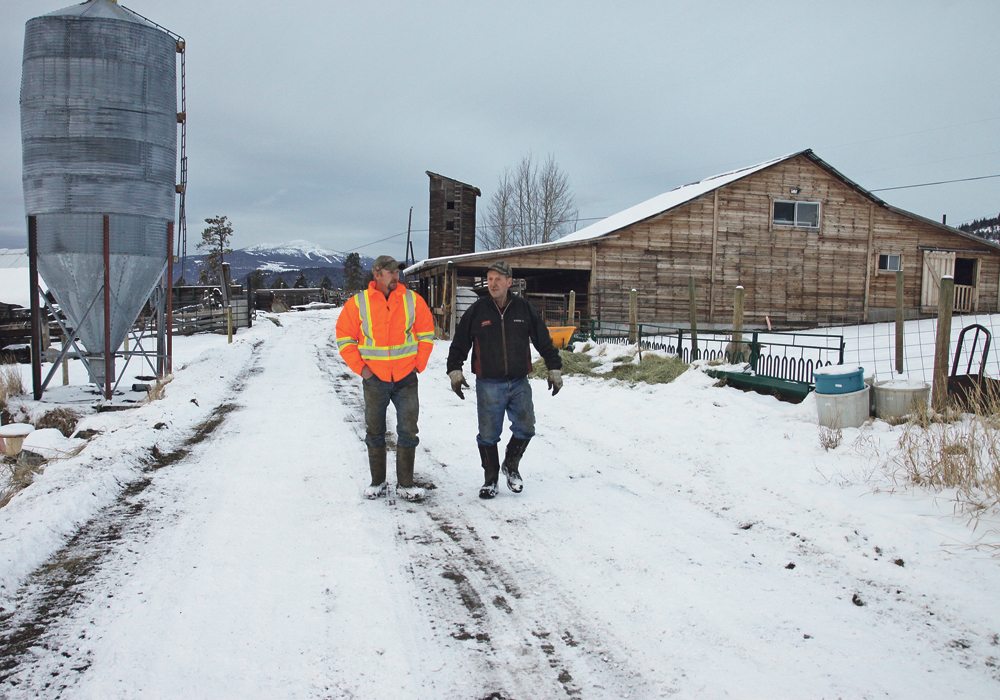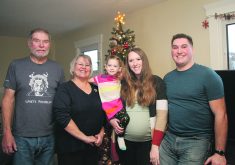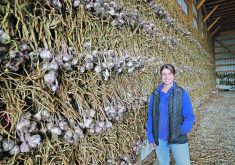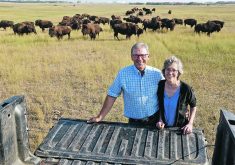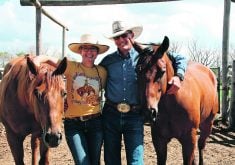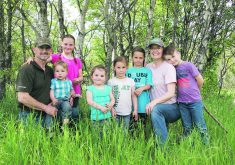BRIDESVILLE, B.C. — Art Harfman recalled the moment he met his soul mate at a 4-H achievement day as a teenager.
“As soon as I laid my eyes on her, I said to myself, ‘when I’m ready to marry, that’s the girl it will be,’ ” he said.
A decade later, he married Norah and started raising a family on a purebred Hereford ranch on the Anarchist Mountain where his grandsons continue the 4-H tradition.
When Norah came to the Harfman farm, which was established by Art’s parents, Jacob and Marguerite, in 1946, she also knew this was what she wanted.
Read Also

Nutritious pork packed with vitamins, essential minerals
Recipes for pork
“I loved it when I was first here,” she said.
Art and Norah agreed it was the best place to raise their four sons despite the challenges they faced.
The Harfmans once had the largest purebred herd in the province, but Art cited a marked decline in cattle numbers in the region due to a blue tongue quarantine in the 1970s, followed by high interest rates in the 1980s, BSE in 2003 and high land prices today.
“We just about lost it all,” said Norah.
Added Art: “When we get these extreme highs and extreme lows, it’s hard on everybody.… You’re only going to do it for so long for nothing and you either go broke or just quit.”
They sold 800 acres of their original ranch and switched to commercial cattle to reduce the amount of paperwork involved.
”I said no more purebreds. It was a lot of work,” said Norah.
Added Art: “We had to bite the bullet or lose everything.”
The ranch once housed 700 head and covered 10,000 acres, which included leased crown land.
Art and Norah then started working off the farm, he as a school bus driver and brand inspector and she as a teacher’s aid and custodian.
“We’d never seen that on the farm,” said Art of the $60,000 they made off the farm in one year.
The ranch used to cost them $300,000 to run.
“We were lucky if we broke even or didn’t lose more than $25,000 to 30,000 in our operation,” he said.
Today, the Harfman’s son, Grant, and his wife, Holley, are raising sheep and cattle on the 400-acre Circle Two Ranch with help from Art and Norah.
They live across the highway in Grant’s grandparents’ former home and also work off farm. He works in excavation and roadwork and she is a speech therapist.
In addition, they receive revenue from two rental trailers housed on the ranch.
Grant’s grandfather was an immigrant who came to Canada to escape persecution in Yugoslavia.
Finding Manitoba too cold, he ventured further west and settled in British Columbia.
“Dad said if it wasn’t for the water, he would have walked back (overseas),” said Art.
His father also earned extra money with sawmill and custom threshing work.
“He worked like heck and he could only think about cattle and farming,” said Art. “(Jobs) have given us outside money to live off and try to make the ranch hold its own.… That’s the story of pretty near everybody around here ex-cept the large operators.”
The Harfmans credit heavy black soil and a hard clay base that doesn’t let the water drain away with helping them weather dry periods.
In addition, Art developed a finish ration for cattle of 80 percent barley mixed with beet pulp pellets, natural protein and minerals that allows for a four-pound daily gain rate.
“They come four to six times a day and eat a little bit and are far more efficient on it,” he said.
“A beef animal will not eat more than two lb. of grain for every 100 lb. of weight.”
They keep horses but are more likely to move their cattle down the road to their leased acres by quads and bikes these days.
Grant took over the ranch recently to ensure it didn’t get sold, with help from Farm Credit Canada. All names remain on the title with the arrangement giving cash to the elders and a mortgage to the younger couple.
“Once sold, we’d never afford to get it back,” said Holley, whose summers off allow her more time to help on the farm with invoices and chores.
“I want to keep (cattle) for the future, but we couldn’t make a living or have a lifestyle just on our animals,” Grant said. “You always hope that things are going to get better, but I don’t think so.”
He and Holley do custom grazing, grow feed and often buy hay from his brother. They downsized their sheep herd to 10 from 30 recently because they didn’t have enough animals to ship feasibly to markets on the West Coast.
They also keep poultry for their own uses.
“It pays the bills,” Grant said.
“We’re holding it where it’s at. Other businesses are taking off and they pay better.”
They direct market their stock off the farm and have spring and fall calves to make good use of their herd bull. They sell mainly by word of mouth and Facebook, are part of the B.C. Beef Net marketing group and are also featured on the B.C. Meats for B.C. Families website.
For 2018, the Harfmans all have winter vacations planned in California.
“Because Grant’s business is at home … most conversations are work based,” said Holley.
“It’s important to get away, relax and decompress.”
Norah and Art plan an extended southern break in their RV.
They agree having two families involved allows each to get away.
The Harfmans look to the future, hoping to see agricultural land left in large tracts for those like them who choose ranching.
“We’re not doing it because we have to do it but because we want to do it,” said Grant.



